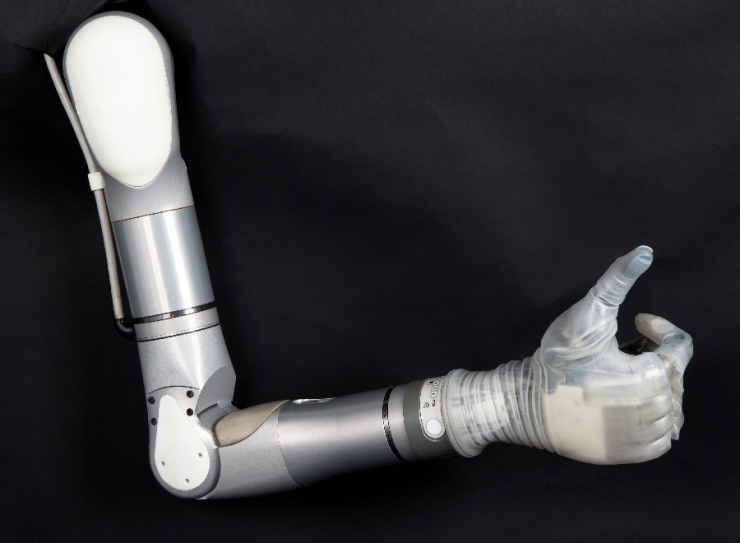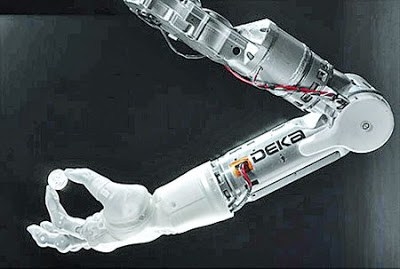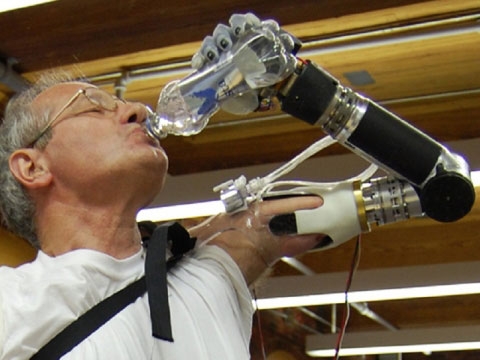
Let's imagine this picture: One day, when you wake up in the hospital, you can't remember what happened, but you are horrified to find that your left hand is gone. The doctor tells you that you have just experienced a car accident. Since then, you have lost your left hand and you are desperate. You find that 99% of your life is done by hand. At this time, you think of a robot prosthetic limb. Maybe it can help you. At your friend's suggestion, you came to a nearby rehabilitation center and put on an artificial limb. The prosthesis fits your body perfectly. You are very satisfied. You can still do what you like like a normal person. You gradually begin to accept your new identity. You forget that you are a disabled person.
Well, now, I want to tell you a sad news.
In Europe, there are 1900 new cases of amputation every year. And what can robotics, rehabilitation science, and engineering do for these people? At least before I wrote this article, they could do very little.
Although multi-fingered prosthetic limbs have been on the medical market for eight years, it is still difficult to achieve the vision I described earlier, let alone the amputation of the entire arm. If you lose the entire arm, it would be hard to realize the above scenario. Now, only the world's top laboratories can solve this problem, provided that they can absorb enough funds. Nowadays, there is only one mature mechanical prosthetic limb in the world, DEKA Prosthetics, which has been approved by the FDA (United States Food and Drug Administration). The device was developed by Dean Kamen's company, the inventor of Segway, and is basically the same size and weight as an adult's. The prosthesis is controlled by an electromyographic electrode implanted in the residual limb. The sensor collects the electrical signals of the upper arm muscles while the computer in the prosthetic can identify the user's type of operation. Although its application in a specific area is relatively mature, it is still not enough to benefit the majority of people.

Our research center has been following this issue for 10 years and has been working hard to create natural and flexible upper limb prosthetics.
We face enormous challenges: how to connect the prosthetic limb to the patient's body, how to ensure that the system allows the patient to do what he wants to do, how to avoid errors in the control system, and so on. We are in close contact with hospitals and clinics to understand the real needs of patients.
We found that the main bottleneck is that today's prosthetics are somewhat like industrial robots. They were originally created for a specific group of people and later used for other patients. Because each patient's situation is different, it is almost impossible to accomplish this task.
We need a whole set of systems (including sensors, control electronics, and prosthesis itself) that fit tightly with the patient's body and become more and more consistent over time. For the system, it is a learning process: On the one hand, the control system based on machine learning needs to be in an “improved†state and able to adapt to the new environment more and more; on the other hand, the patient will also be Progressively understands one's own prosthetics and can give instructions to prostheses.
This process is a bit like learning to open a motorcycle. You need to understand the power of the engine, the stability of the steering, and also learn how to start, control the direction, brakes, and more. The more you practice, the stronger your skills will be. After a while, you will be able to do it. The same is true for prosthetics. You need to be in close contact with it so that after day after day it can become part of your body.
Let prosthetics learnWe use this machine learning technology to produce "continuous adaptation" effects, making the prosthetics more and more suitable for patients. The algorithm can turn body signals into control instructions. When receiving familiar instructions, the prosthetic arm will react accordingly; and when receiving unfamiliar instructions (such as when the patient is in stress state, the muscle state is different from usual, the prosthesis When new instructions are received, new instructions will be added to the repository so that similar reactions will occur in the prosthetics in the future.
This skill is actually very important. Prosthetics will encounter many different scenarios, such as stabilizing heavy objects. Imagine: You are shopping in an afternoon. No matter if you are walking, sitting down, stooping or kneeling, the shopping bag must be hung on your hands stably, so your hands, wrists, shoulders, etc. must be stable. At the very beginning of the rehabilitation program, we must predict this situation; when we encounter a situation that is not encountered, the prosthetics need to learn.

In fact, the learning of the prosthetics is the learning of the control system, and the control system must continue to learn, we must let it keep in touch with objects. This is the key to rehabilitation. In addition, no test can produce results quickly. We need to combine different kinds of objects, control systems, prostheses, etc., one test at a time to adapt the system to different everyday situations. This means that our engineers, mathematicians, and robotics scientists must combine their skills with medicine and patients. They must learn to contact end-users, doctors, etc., and test different electromechanical integration models from the beginning.
In front of resistance and longProsthetic limbs not only need to solve the problem of biological exclusion, need to be in perfect harmony with the human body, and more importantly, it must possess learning skills. However, the reality at this stage is still very cruel. Many amputees do not have the means to install prosthetic limbs, and the world has not yet seen the type of rehabilitation center mentioned at the beginning of the article.
For the prosthetics to truly benefit those in need, we are still obstinate and long. In the medium to long term, we should open up the prosthetic market; and in the short term, we need to improve the prosthetic function so that the prosthetic can learn continuously and make it more and more suitable for the users. Only in this way can we truly improve the world of people with disabilities.
Via:Robohub